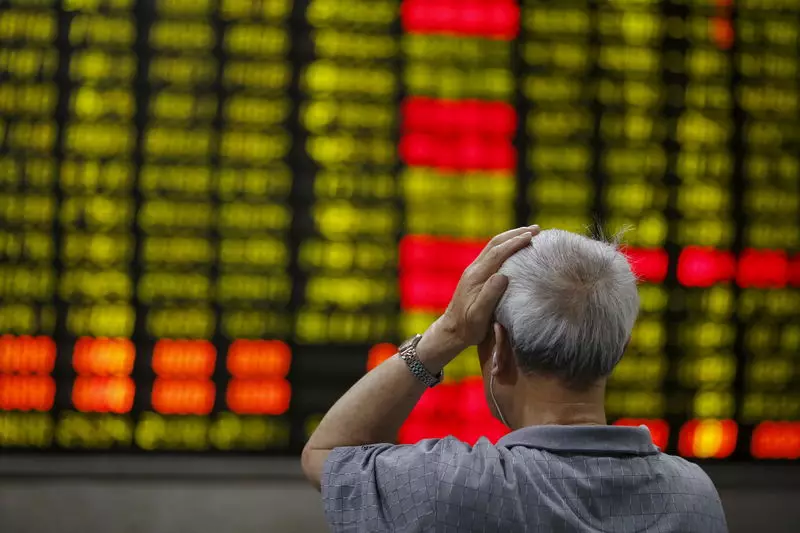The stock markets in Japan and Australia experienced a decline on Wednesday, signaling a broader trend across Asia. This downward movement was prompted by concerns over the potential increase in U.S. interest rates, which were expected to be discussed at a Federal Reserve meeting later in the day. It is worth noting that many other markets in the region were closed for the Labor Day holiday, leading to lower trading volumes and a lack of market activity.
In Japan, both the Nikkei 225 and TOPIX index dropped by 0.7% each, with technology stocks taking a hit due to losses in the U.S. market. The volatility in the yen also played a significant role in investor sentiment towards Japanese markets. The currency had initially rebounded from record lows, possibly due to government intervention, but then weakened again, causing concerns among traders about potential further interventions. Additionally, Purchasing Managers Index data revealed a slight contraction in Japanese manufacturing activity, adding to the negative outlook for the country’s economy.
Meanwhile, the ASX 200 index in Australia fell by 1.2% due to widespread losses in various sectors. The Reserve Bank of Australia’s potential decision to raise interest rates in response to inflation concerns also contributed to the negative sentiment in Australian markets. Analysts at Rabobank even predicted two more rate hikes from the RBA, following higher-than-expected inflation readings in the first quarter. While the RBA is expected to maintain current rates at its upcoming meeting, there is a possibility of a more hawkish tone in its messaging.
Looking ahead, market participants were eagerly awaiting the outcome of the Federal Reserve meeting, where the central bank was anticipated to keep rates unchanged. However, Fed Chair Jerome Powell could provide a more hawkish outlook, given the recent trend of higher-than-expected inflation data. The possibility of the Fed beginning to trim rates by September added to the uncertainty surrounding global markets.
The Asian stock markets faced significant challenges due to fears of prolonged U.S. interest rate hikes, market volatility, and inflation concerns in Japan and Australia. Investors remained cautious as they awaited crucial decisions from central banks and government interventions to stabilize the economy.

